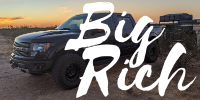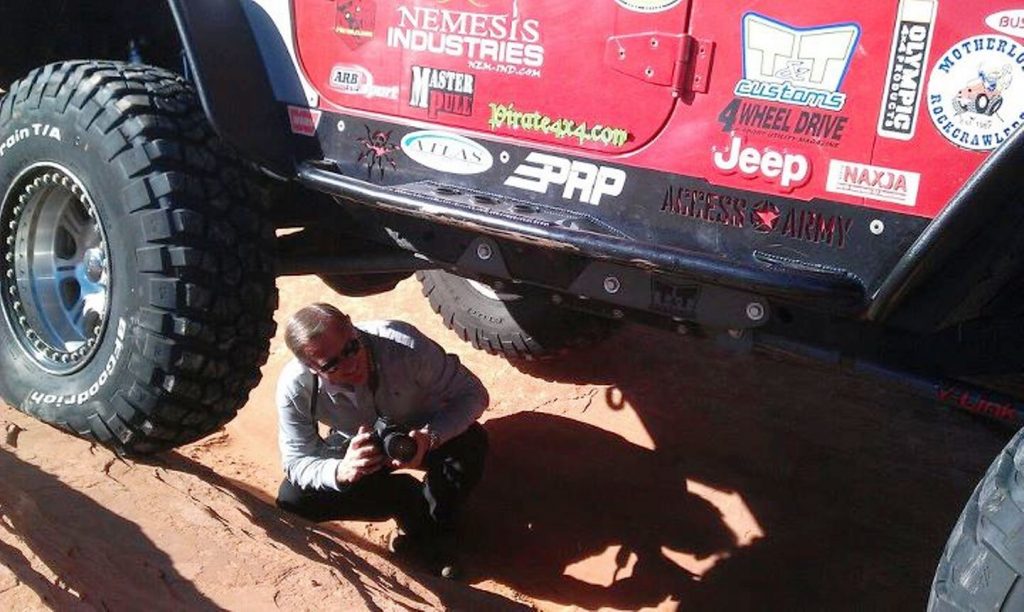The Godfather of competitive rockcrawling, the man behind the idea, Phil Howell, shares life on the road as an award winning DJ, a magazine editor, and the leader of the band. Phil’s stories showcase a piece of Americana that few rarely see. Go back in time with us as this whole crazy off-road world, as we know it today, was just getting started.
Be sure to SUBSCRIBE to Conversations with Big Rich on your favorite Podcast Player
6:00 – A description of Baja in the early days, on a motorcycle
8:36 – She wasn’t impressed
14:50 – racing a 1972 Opel at SCCA
23:15 – draft #11, I picked Air Force, because the Air Force had girls
25:50 – always take care of your NCO’s
29:24 – quitting the band
37:14 – getting tackled by Reagan’s security team
43:09 – I’m not telling them about the trails
50:36 – The early days of EJS and Red Rock 4Wheelers
57:59 – But I flunked English, twice!
1:08:02 – The twin YJ’s get confiscated?
1:12:37 – the beginning of competitive rockcrawling
1:21:08 – paying for the builds
1:34:16 – my cockiness got me to Baja
Mad respect for this legend in our sport, if we could all be so lucky to have as many life experiences.
We want to thank our sponsors Maxxis Tires and 4Low Magazine.
TRANSCRIPT
Big Rich Klein: Phil has led a very full life with jobs or careers that span a long list from record DJ, celebrity photographer, fighter pilot, Jeep tour operator, magazine editor, and to being the true godfather of competitive rock crawling. Let’s talk to Phil about his very interesting life. Today. We have Phil Howell, Phil I’d like you to share with us your life story. I know that there’s a lot of things behind the scenes that you’ve done that, especially any of the newer people that are into off-road have no idea about.
Big Rich Klein: And some of us guys that have been around since the eighties don’t know the whole story. So Phil, we’re asking you the whole story, let us have it, you know, where did you, where did you grow up at
Phil Howell: Okay. I was born in Upland, California, and then, right after I was born, my parents moved to red Hill and Cucamonga, which is now Rancho Cucamonga, but it wasn’t fancy when I grow up there. And there was like, I can’t remember the altitude was the same as the population. Oh, it was 1200 feet above sea level. And I had 1200 people on the sign that the California sign as you drove into the city limits. But when I grew up there, it was orange groves and vineyards. I mean, that was the major industry. There was agriculture. And even though we only lived 45 minutes out of LA, we were over the Hill in the inland empire and it was like a world away, from Los Angeles,
Phil Howell: Although we still use the freeways to get everywhere. But, but anyway, so I grew up there. It was really a lot of fun. I liked to go exploring. I was in boy Scouts. We used to hike. They were right at the foot of the San Gabriel mountains. So hiked up to all the peaks. So I used to go on 50 mile hikes in the boy Scouts up on the John Muir trail every summer. And that was a blast. And I think that’s what started me getting interested in exploring. I just love to go out where there weren’t that many people or where people had been, but weren’t any more. I loved history. And in high school I used to go, I spent all week on my free time. I’d go in the library and the school had a pretty good library and they had guidebooks like Russ Letterbrands California byways, and, which was, printed by AAA, you know,the automobile club.
Phil Howell: And he talked about not only paved roads, but dirt roads and ghost towns. And, and I would read the desert magazine of course, and read all kinds of stuff about ghost towns. And then on the weekend, go out and explore. My dad had brought home a 1966, Yamaha trail master 80, which in those days there weren’t anything. The mini bikes were mini bikes, you know, with a Briggs and Stratton motor on them. No suspension, no suspension had a tube frame and a Briggs and Stratton, but I never had one of those. And I’d look at my friends that did, would just envy. My dad brought home a Yamaha trail, master 80 brand new, and it was a full size motorcycle. And so I learned to ride on that and, probably 67 68, we got, I got a C L 77 Honda three Oh five scrambler, which nowadays we look at that it’d be laughable to take off road.
Phil Howell: But all I did was pull a muffler off the twin pipes, which were high because it was a scrambler. You know, the scrambler had been used though in the Baja, Baja one thousand in the NORRA, one of the very first races that the scrambler was used and won, I don’t remember which year, but anyway, rode that then kept getting into it. My friend, a guy named Sean packer, his parents started a business called allied motorcycle salvage, and they bought all these old bikes. And then I would work for them alongside Sean we’d strip these insurance wrecks for parts. I made a little money there and was able to buy a Bultaco. And first I had an old Camppara, which no one knows about because it was kind of just an obscure Spanish, nothing. And then, and I got a Matador which had won the international six day trials and not my bike, but that model, and then got a Persang and we’d ride these things down the Baja.
Phil Howell: We we’d go down to the pavement, ended at San Felipe Bay and we take off and head down to Gonzaga Bay. And there was nothing along that coast, along that Gulf coast. I mean, now I guess I haven’t been down there. Well since 92, but there was now I hear it’s just houses, Americans and others have vacation homes. There was nothing. And you hit Puertocitos, had a little, little cantina and hot Springs, and then you’d go up through the seven sisters. If you’ve been down there over the mountains, down into Gonzaga Bay, Oh, Alfonsinas, was down there, but that was a blast. And we used to ride the motorcycles down there. At least every summer we’d go on a two-week trip. I go down there, but I was really into motorcycles, but then I got my license and I decided READ MORE





